Hi! I am an absolute newbie at electronics (though an Industrial engineer by qualification). I discovered this diagram for a VCO from the datasheet for an LM 358. I assumed when they say 1/2 LM 358 they mean one of the two op amps that are inside the LM 358. So I assumed they meant that the output of one Op amp will go into the input of the other, meaning I connect pin 1 to pin 6 on an LM 358. So I set up the circuit accordingly but it doesn't work so I deduced that's not what they meant when they labelled the op amp 1/2 LM 358.
Could someone please explain how I am supposed to make this and tell me what 1/2 LM 358 is supposed to mean?
What does the V+/2 as a non inverting input into the second op amp mean? Am I supposed to put in half the voltage at this point? Half of what?
I read that VCOs are tough to tune etc and are usually very complex to build. I don't know what means. Can I make this one easily?
